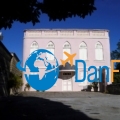Affluent Jewish community prospers in Quito
The Jewish News of Greater Phoenix — April 5, 2013
QUITO, Ecuador – In a northern Quito suburb called Carcelén, just a 15-minute drive south of the equator, sits a Jewish Community Center that – in its own way – is every bit as impressive as the Andean peaks and volcanoes that overlook it.
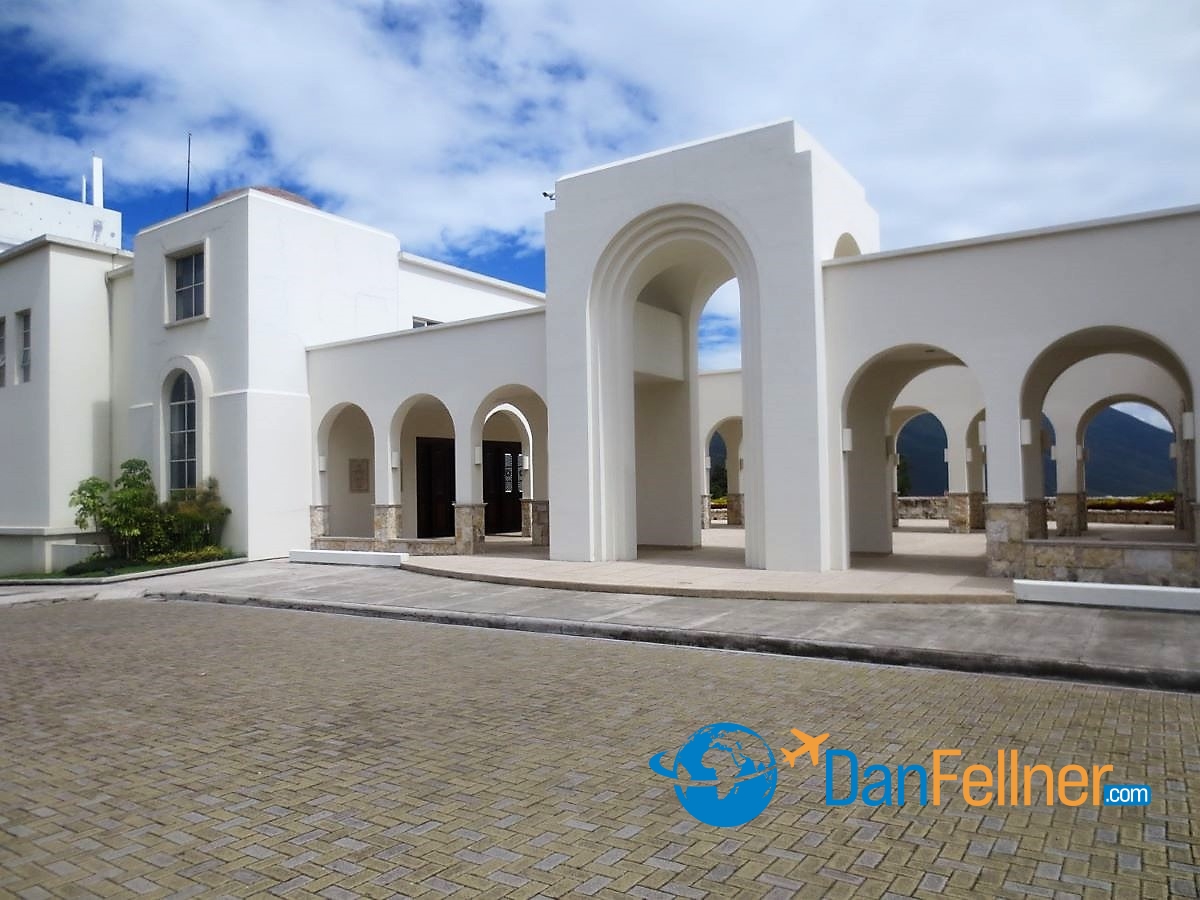
The architecture of the Jewish Community Center of Ecuador is evocative of Jerusalem.
Ecuador’s capital city is home to only about 700 Jews. Yet the 13-year-old Sede de la Comunidad Judia del Ecuador – the Jewish Community Center of Ecuador – is a multi-million dollar facility that is as expansive and lavish as you’ll find in many large American cities.
I recently visited what the Jews in Ecuador simply call the “Community” as part of a five-day trip to Quito, a city of more than 2 million people.
With an elevation of about 9,200 feet in a valley surrounded by the Andes Mountains, Quito is the second-highest capital city in the world.

Quito is the world’s second-highest capital city.
Even though it’s located so close to the Equator, the city’s elevation gives it a springlike climate year-round.
After a one-hour taxi drive from my hotel in the city’s historic downtown district – a UNESCO World Heritage Site — I arrived at the hub of Ecuadorean-Jewish life. As I approached the complex, I was immediately impressed with its architecture of thick stone walls, resplendent arches and rust-colored domes that were much more evocative of Jerusalem than Latin America.
Inside, I met with Rolf Stern, who runs Ecuador’s member firm of the BDO International accounting network and is just completing a six-year term as president of the Jewish Community. Following our meeting, I was given a tour of the complex by Sebastian Medina, the Community’s on-staff director.
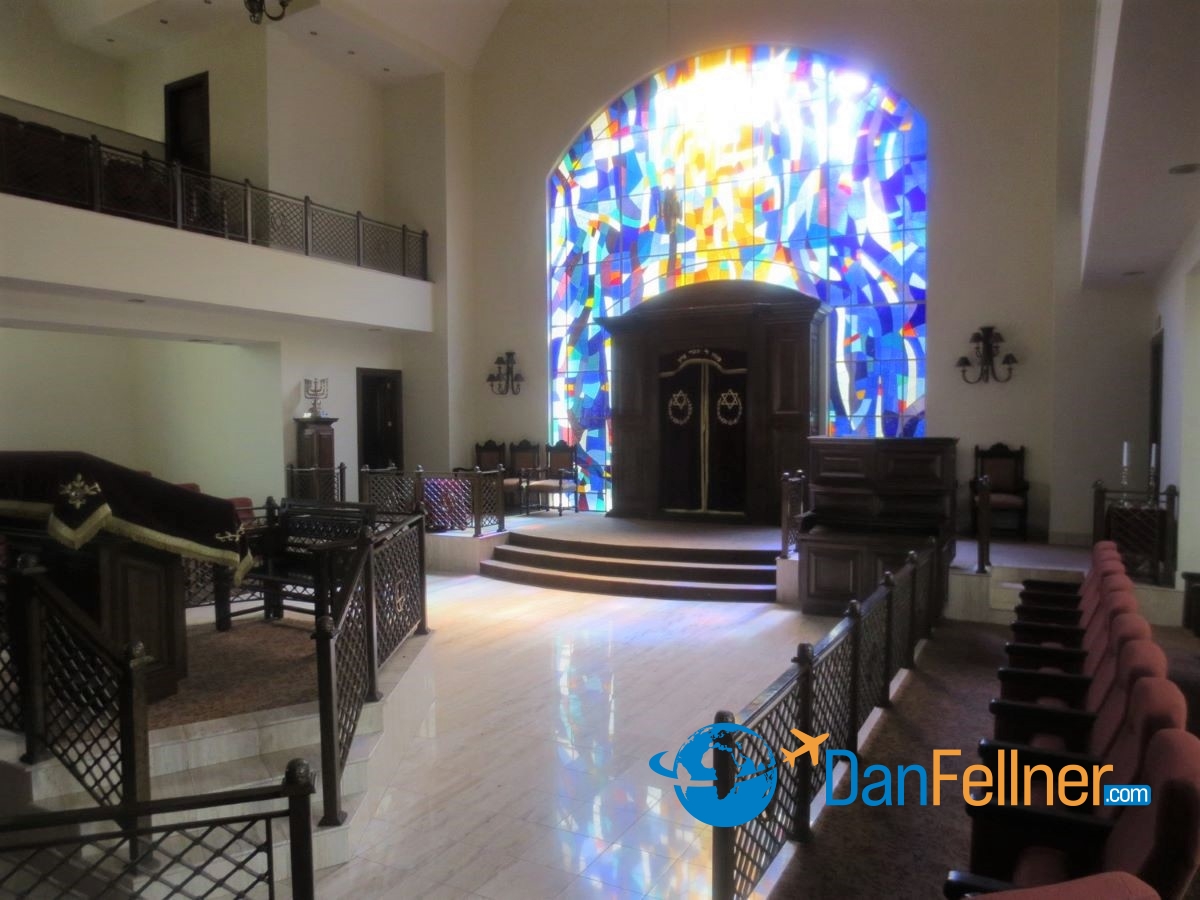
Quito’s Conservative synagogue inside the Jewish Community Center can accommodate 400 worshippers.
The heart of the complex is a beautiful two-story synagogue, complete with several exquisite stained-glass windows, and enough space to accommodate about 400 worshippers. Services at the Conservative temple are conducted by Rabbi Alexander Mylinski, who originally is from Argentina.
In addition to the synagogue, the Community has a mikvah, squash and tennis courts, a large indoor swimming pool, a youth center and its own soccer field. There is an on-site kosher kitchen and cafeteria. It not only offers home delivery, but also provides kosher food for some of the cruise ships that sail to Ecuador’s Galapagos Islands. The complex also boasts one of the largest ballrooms in Quito, which is used for bar mitzvahs, weddings and other social events.
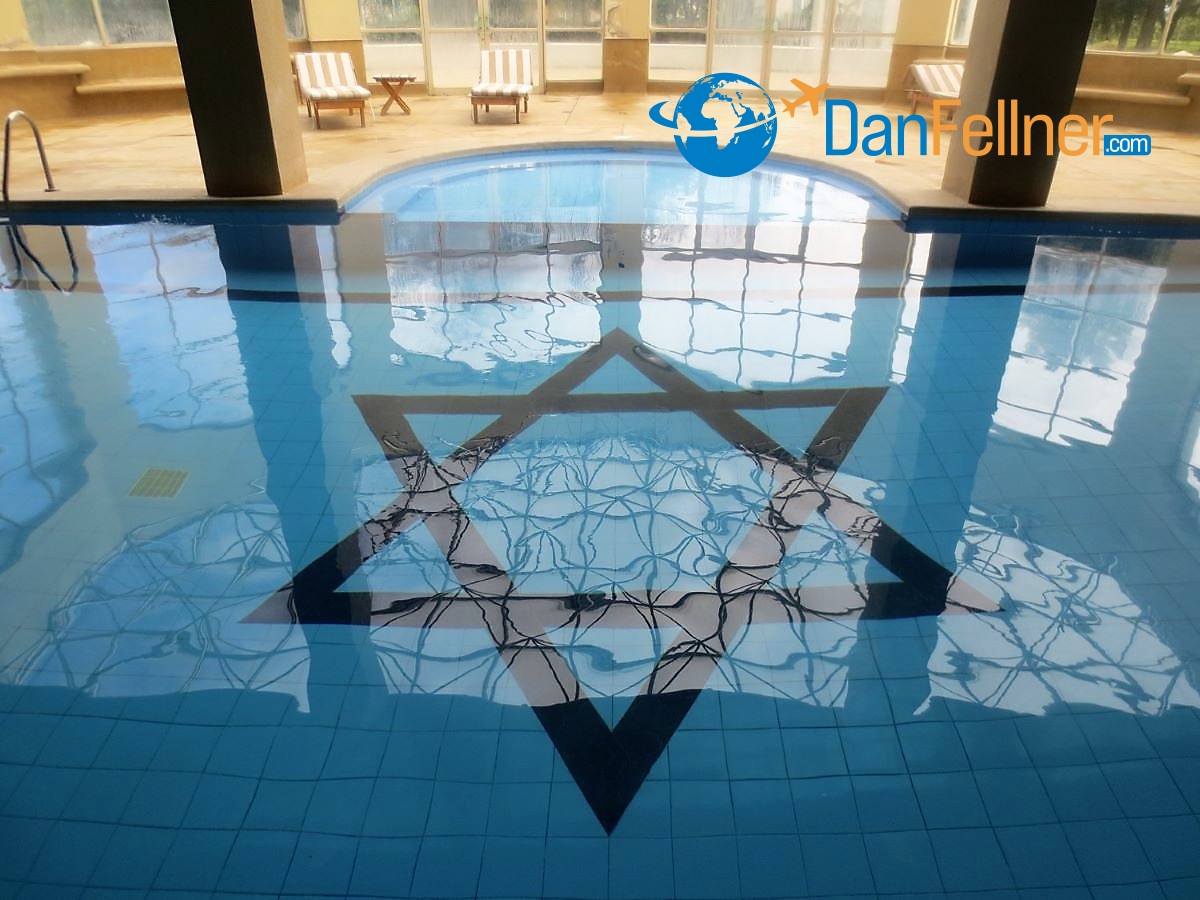
The large swimming pool inside the Jewish Community Center of Ecuador.
Stern said the complex was funded by the sale of the Community’s prior facilities as well as the financial contributions of Ecuadorean Jews.
“We’re very fortunate and blessed in having a strong community sense, which is reflected by the generosity of our members, including the large donors,” he said.
Just a couple of blocks away from the Community sits what Stern called “one of the three best schools in Quito” – the Albert Einstein School, which serves students from kindergarten through the 12th grade.
The school was founded 40 years ago by members of the Jewish community; Jews still lead the school today. Even though 92 percent of its 660 students aren’t Jewish, all students are required to study Hebrew and learn about Jewish culture and history.
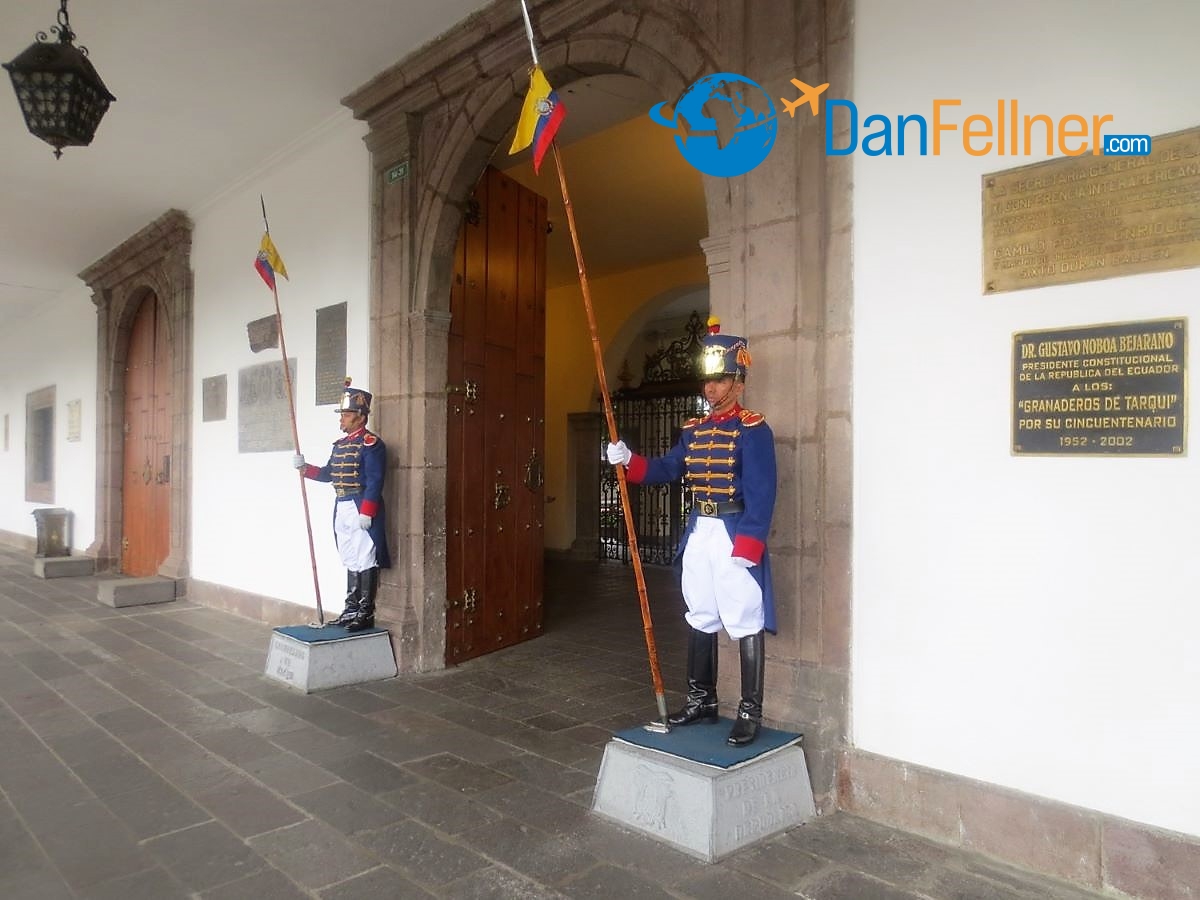
Quito’s Presidential Palace.
Stern is typical of most Ecuadorean Jews in that his parents – German Jews – immigrated to the country in the late 1930s to escape the Holocaust. In 1950, the Jewish population in Ecuador peaked at about 4,000. That number steadily dwindled over the years, although Stern notes that there has been a slight rebound in the past five years.
“What we’ve seen is that young members of the community who were working or studying abroad have now started to come back,” he said.
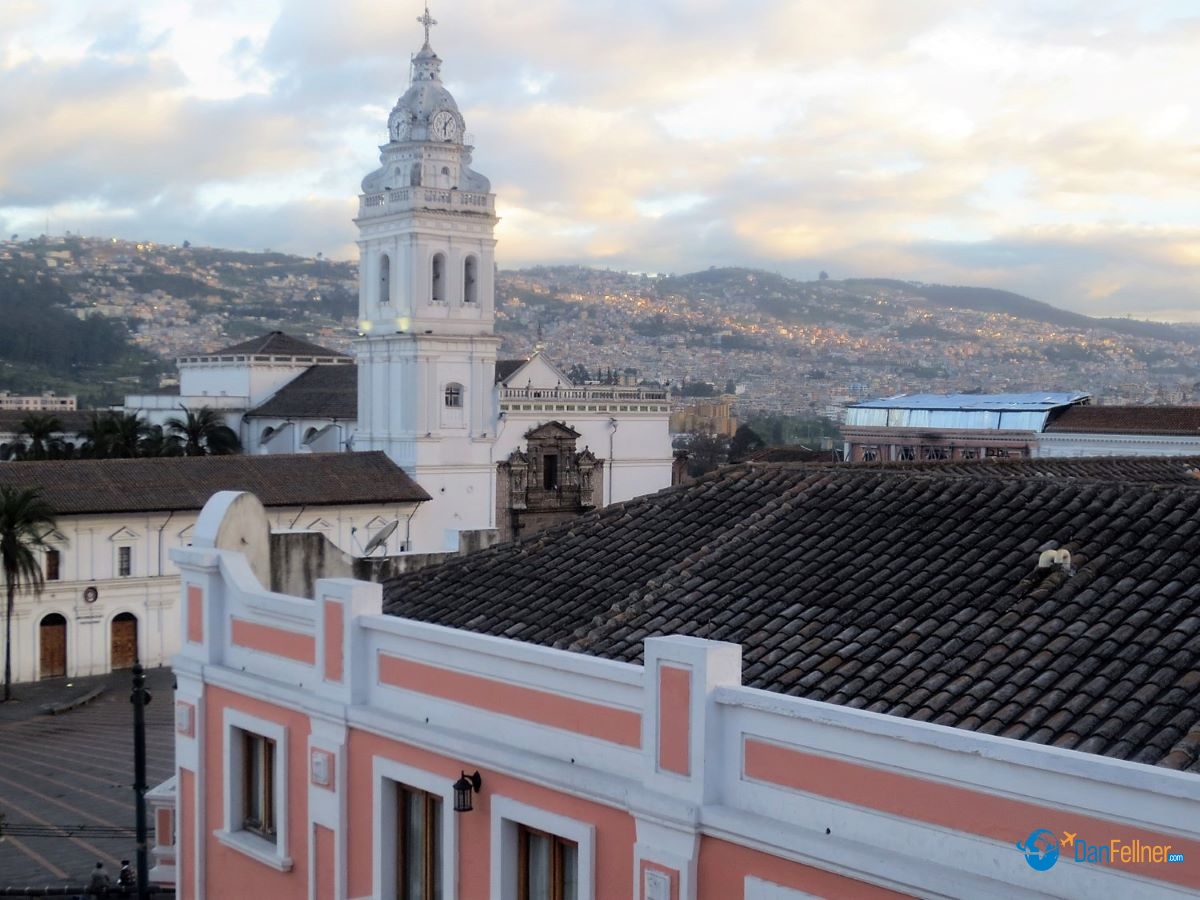
More than 90 percent of the Ecuadoran population identifies as being Roman Catholic.
Under Stern’s leadership, the Community has launched an outreach effort – called the “Community Growth Program” — designed to attract foreign Jews to migrate to Ecuador.
“It’s a great place to live and bring up kids,” he said, adding that the relationships between Jews and the Ecuadorean government and the population at-large are excellent.

Quito’s most famous tourist destination – La Mitad Del Mundo — is just a 15-minute drive from the Jewish Community Center.
“Jews are generally admired for being hard-working and are considered to be successful people,” he said. “There is no anti-Semitism in Ecuador, at least not in the last 30 years.”
The Community is in the process of building a new residence for seniors. Expected to open in 2015, it will initially have 12 suites, with plans to eventually grow to 20 units.
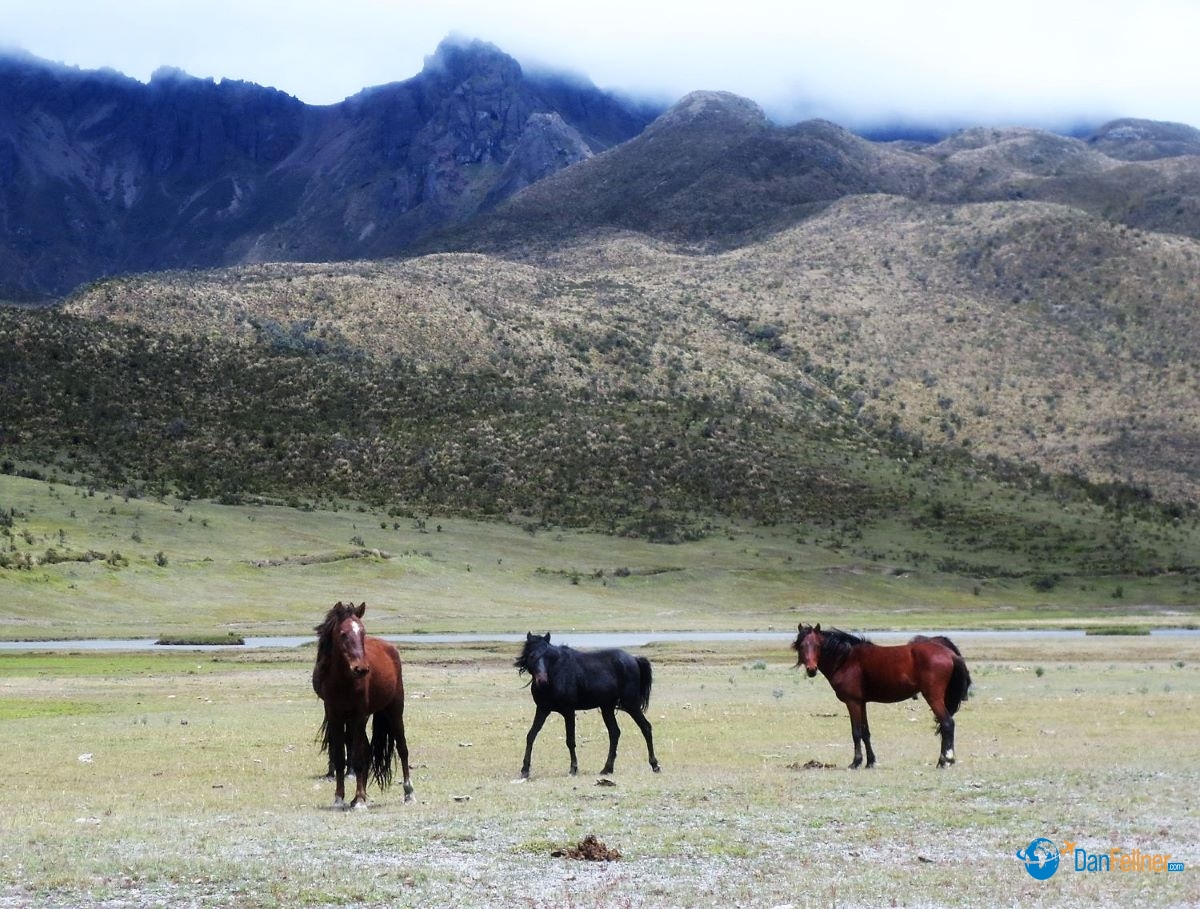
Wild horses in the Andes Mountains outside of Quito.
After my visit to the Community, I took a short taxi ride to perhaps Quito’s most famous tourist destination – La Mitad Del Mundo (the Middle of the World) – a monument at the site where a French scientist in 1736 calculated the equator to be. Turned out, he was off by about 600 feet. But it’s still a fun place to visit and pose for the obligatory photo with one foot in both the Northern and Southern Hemispheres.
Later in the day, I visited an upscale Jewish-owned shopping mall in downtown Quito. There, I had lunch with Offir Adaki, an Israeli who has lived in Ecuador for 18 years.
Adaki, who serves on the Community’s board, went backpacking in Ecuador after serving in the Israeli military. He so enjoyed the weather and the slower pace of life compared with Israel, he decided to make Quito his permanent home.
“Everything is calm,” he said. “People are really nice here. I think it’s the ultimate place to live.”

A battalion of women soldiers in formation in downtown Quito.
Adaki owns a travel company called Ecuador Nature (www.ecuadornature.com) that brings Jewish groups — 50 percent of which come from Israel — to see the sites of Ecuador and the Galapagos Islands. He said he makes a point of taking each group to visit the Jewish Community Center for lunch.
“When you bring them inside, everybody says, ‘Wow, that’s a beautiful place,’” he said. “They didn’t expect to see something so impressive.”
Stern said Jews planning to visit Ecuador are more than welcome to attend services and come for a kosher meal. He added that Quito also is a great place to have a “destination celebration,” such as a wedding or bar mitzvah.
“People should know that we are a very welcoming community,” he said.
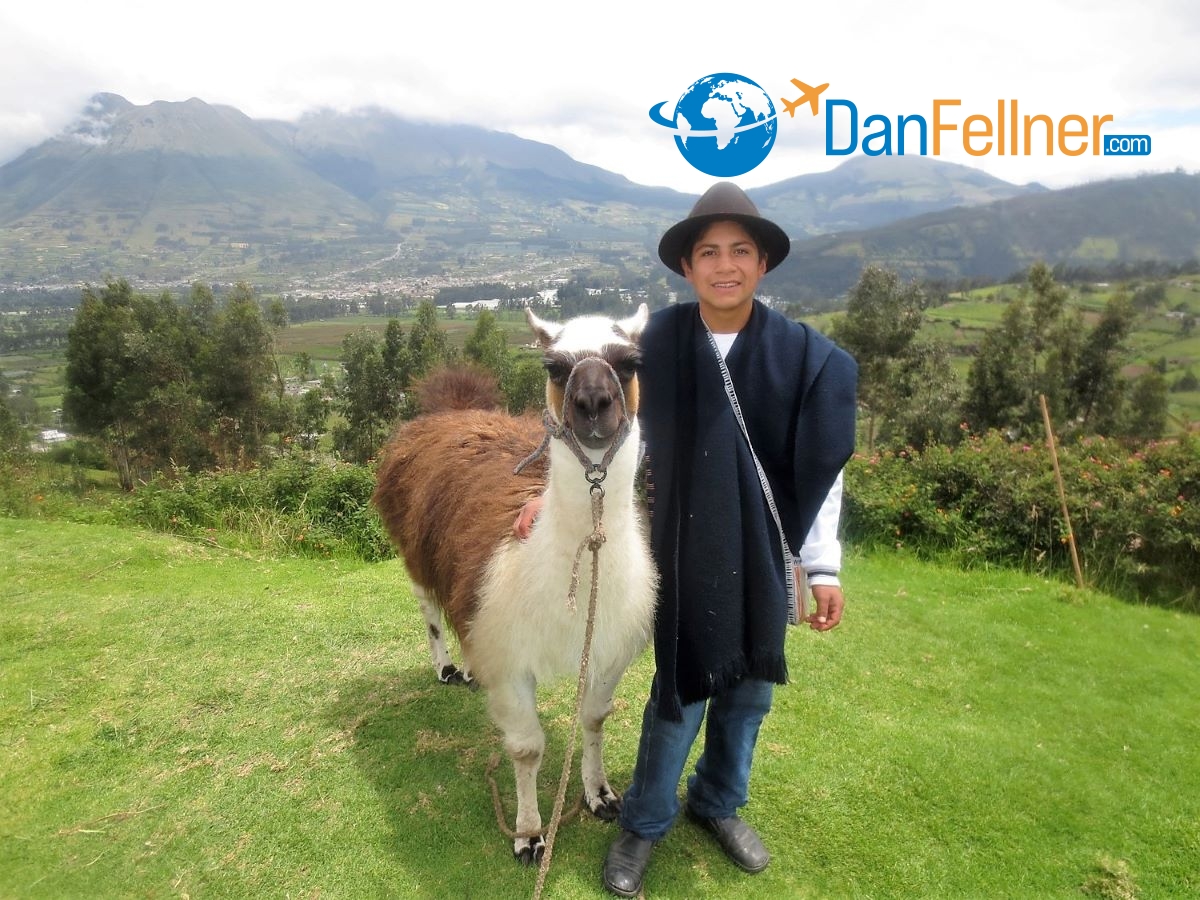
© 2013 Dan Fellner


